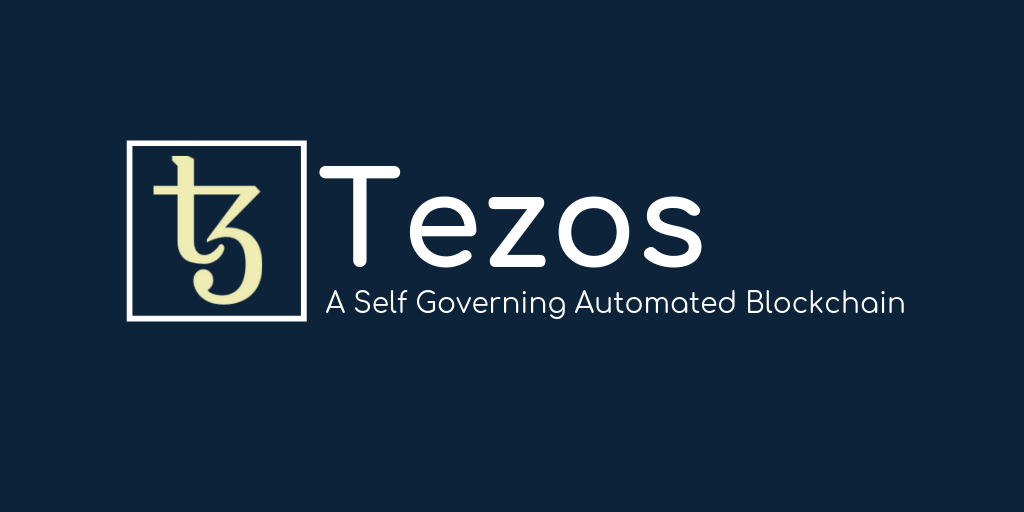Blog | Blockchain
What is Tezos Blockchain ? How it works ?
Explore here about Tezos a self-evloving blockchain,its history,tesoz cryprocurrency and architecture
- Blogs

What is tezos

Blockchain technology is booming up the digital world in recent days. This paved a way for creating separate blockchain network for various industries like music, games, etc. There evolved blockchain networks such as Ethereum, EOS, TRON, Steller, Waves, etc till date. Tezos has been added up next in the list of the blockchain network, but tezos will not be just one among them. Many predictions on tezos blockchain state that, It will be the superior blockchain network ever, as it holds the future of blockchain governance. Let's have a look at why tezos creating a huge hype in blockchain industry? what is the specialty of tezos? and what if the tezos blockchain has been implemented in real time applications?
Without delay, let us discuss in detail about Tezos Blockchain Network. This discussion covers the following concepts.
1. What is Tezos?
2. History of Tezos
3. XTZ - Cryptocurrency of Tezos
4. Difference Between Tezos and Ethereum
5. Tezos Architecture
6. Working of Tezos
7. Baking - What does it mean?
8. Tezos Athens - What is it?
9. Michelson and LIGO
10. Tezos - Holding the future of Blockchain
What is Tezos?
Tezos is a blockchain network similar to Ethereum for developing and deploying smart contracts and decentralized applications. Tezos is the first self-evolving blockchain in the globe.
Tezos is a P2P, distributed, and permissionless blockchain network aiming to make a few notable improvements and innovations in the blockchain.
History of Tezos
Tezos was started developing in early 2014 but has its first launch in 2018.
Founders: Arthur Breitman & Kathleen Breitman
Founded Year: September 2018
Headquarters: Switzerland
Fund Raised in 1st ICO: $232 million
Tezos-founding company is named Dynamic Ledger Solutions ( DLS )
Recent Update about Tezos ( While writing this article )
Roman Schnide, Former PwC blockchain expert assigned as Tezos Foundation Cheif Financial Officer.
XTZ - Cryptocurrency of Tezos
Tezos has its own cryptocurrency Tezos ( XTZ ) which is created through baking. The trade volume of $1.23 USD ( While updating this article ).
Look at the live charts of Tezos (XTZ) price, volume, supply, exchanges, historical statistics in CoinMarketCap.
Difference between Tezos and Ethereum
The smart contract language of the Tezos blockchain is Michelson whereas the smart contract language of Ethereum is Ethereum Virtual Machine (EVM ).
Both EVM and Michelson are stack-based programming language which works by mutating a sequence of data elements to some sequence of instructions.
The main difference between Michelson and EVM are
Michelson is written in a human-legible text format and EVM operates as bytes.
Michelson data elements are typed but it is not the same in EVM.
Tezos Architecture
In general, a generic blockchain protocol is divided into three layers as follows :
1. Network Layer: This protocols hold the responsibility of peer listening and broadcasting it between its nodes, simply known as gossip protocol.
2. Transaction Layer: This transaction protocol defines the accounting model that is being implemented by the blockchain network.
3. Consensus Layer: This protocol helps blockchain reach agreements on the state of transactions, which is pretty self-explanatory.
In Tezos, the network shell provides communication between the network layer and the blockchain layer. Blockchain Layer is nothing but the combination of transaction and consensus layer of tezos.
Working of Tezos
To understands the working of tezos , we must know about the utility of special characteristics of Tezos.
1. On-Chain Governance
The main key feature of tezos is its on-chain governance, which involves the governance and directions of stakeholders on the platform. Tezos allows its stakeholders for a vote on amendments and even for changing the voting procedures too.
In simple words, tezos allows its stakeholders to authorize/change the code or protocols.
2.The liquid Proof-of-Stake consensus mechanism
Tezos uses a typical Proof-of-Stake consensus mechanism, that makes every stakeholder to participate in the network transaction as nodes and rewarded for it. This typical DPoS focuses on scaling up users with security and decentralization.
However, the Tezos wants to fill a gap between both security and decentralization and follows a typical proof-of-stake known as Liquid Proof-of-Stake. This requires one to stake a certain number of Tezos token to participate in the consensus over the network.
3.Smart contracts with verifications
Tezos is coded using OCaml – a fast, flexible, functional coding language. The smart contract language of Tezos is Michelson and LIGO. All of these are functional languages.
The programming languages can be of
Imperative
Functional
Imperative Language: It is a paradigm of programming in which the program describes a sequence of steps that change the state of the system.
Functional Language: It is a programming that emphasizes the evaluation or execution of expressions rather than the execution of commands.
Baking - What does it mean?
Tezos baking is the action of signing and publishing a new block of transactions to the Tezos blockchain. The process of adding a new block to a tezos network is known as baking also known as Endorsing.
To get qualified as a delegate, Bakers need at least 10,000 XTZ and if they have additional delegated stake increases chances for selected as a Baker or Endorser. Baking results in a 16 XTZ reward.

Tezos Athens - What is it?
The first Tezos on-chain upgrade proposal is termed as Tezos. The proposal held two changes in Tezos network which are as follows :
One proposal mentions the process of increasing the gas limit.
Second proposal stresses, increasing the gas limit and reduce the roll size to 8,000 XTZ.
Michelson and LIGO
As mentioned earlier, Michelson is the smart contract language of the Tezos blockchain. It is the first implemented language for tezos network which is a layer 1 solution for Tezos.
LIGO is a smart contract language designed for developing longer smart contracts than that are written on Michelson. LIGO is designed to implement Marigold, a layer 2 solution for Tezos.
Tezos - Holding the future of Blockchain
Tezos is introduced with the aim of providing a better space for cryptocurrency, decentralization and smart contracts. Thus introduces as a self-evolving blockchain tezos plays a better role in the cryptocurrency globe.
Tezos team works for the better delivery of all the aspects and projects on their network. Let us hope for more development of smart contracts and decentralized applications on tezos blockchain network.
We, Bitdeal provides Blockchain Consultation service through which you can connect our team of blockchain experts to know the potential about various blockchain networks.
Get A Demo
We are glad to announce that, Bitdeal is making one more milestone in its journey. As Web3 technologies becomes more dominant and lucrative, bitdeal sets its footmark in AI and Gaming Space. Explore our all-new AI and Gaming Solutions below here.